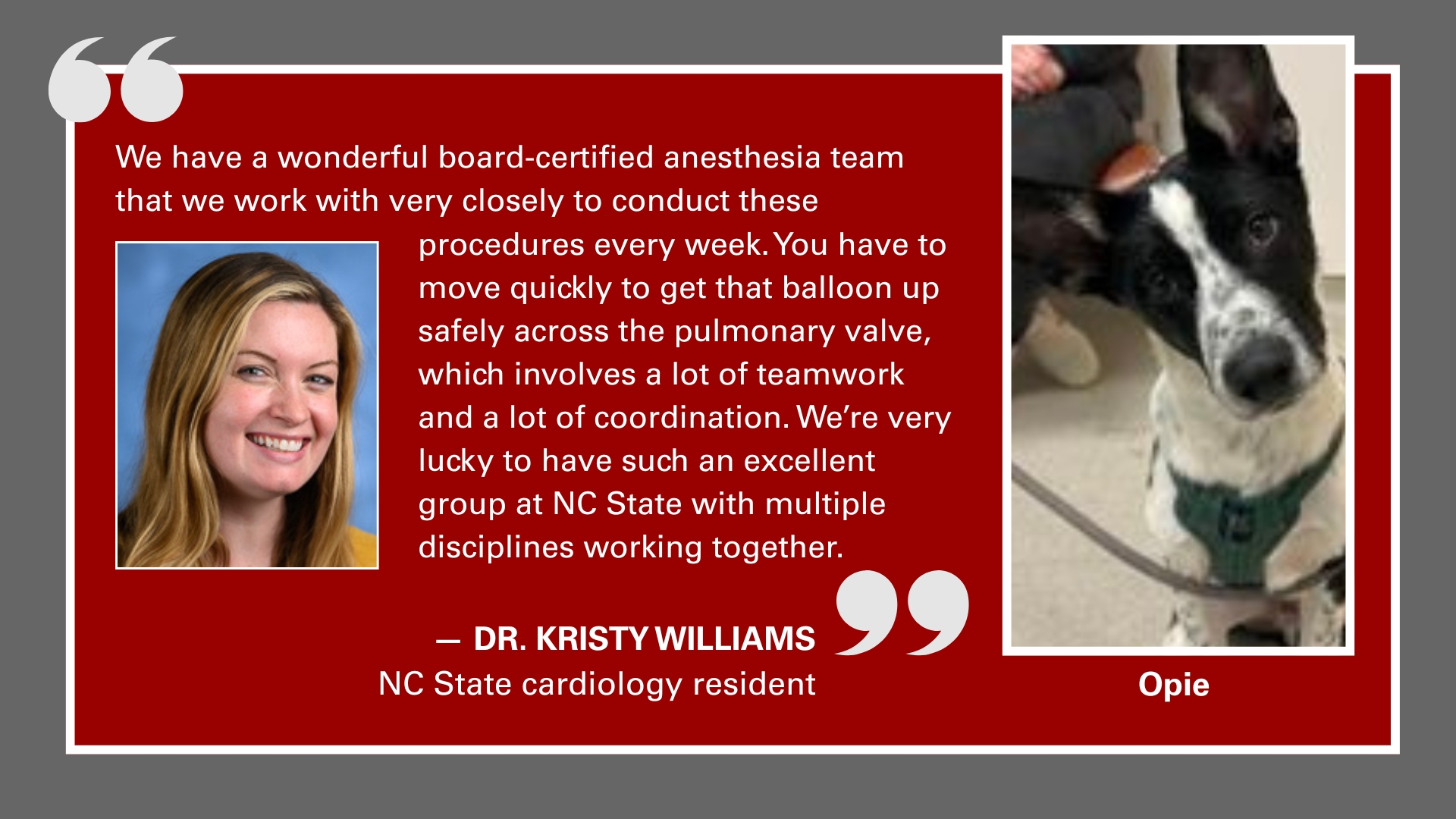CVM Radiologist on Contrast-enhanced Ultrasound in Dogs and Cats
Dr. Gab riela Seiler, an associate professor of radiology with the NC State College of Veterinary Medicine’s Department of Molecular Biomedical Science, had her most recent paper, “Safety of contrast-enhanced ultrasonography in dogs and cats: 488 cases (2002-2011)” published in the Journal of the American Veterinary Medical Association. The paper details the incidence of adverse events within 24 hours after contrast-enhanced ultrasonography (CEUS) in dogs and cats.
riela Seiler, an associate professor of radiology with the NC State College of Veterinary Medicine’s Department of Molecular Biomedical Science, had her most recent paper, “Safety of contrast-enhanced ultrasonography in dogs and cats: 488 cases (2002-2011)” published in the Journal of the American Veterinary Medical Association. The paper details the incidence of adverse events within 24 hours after contrast-enhanced ultrasonography (CEUS) in dogs and cats.
The online resource dug dug: Research Made Simple interviewed Dr. Seiler about her research. The interview is reprinted here with permission.
[section_subtitle] Please tell me very briefly about your own background and research interests. [/section_subtitle]
I was born and raised in Switzerland where I went to veterinary school, and completed a doctoral thesis and a residency in veterinary diagnostic imaging. After completion of the residency, I took a faculty position at the University of Pennsylvania before accepting a position as associate professor of radiology at NC State University’s College of Veterinary Medicine. I am board certified in veterinary diagnostic imaging by both the European College of Veterinary Diagnostic Imaging and the American College of Veterinary Radiology. My research interest is in investigating the use and applications of advanced ultrasound methods in our veterinary patients.
[section_subtitle] What led you to this study? [/section_subtitle]
In human medicine, CT scans (Computed Tomography) and MRI (Magnetic Resonance Imaging) are often the methods of choice to investigate abdominal and thoracic disease. These imaging modalities are also routinely available for our veterinary patients, but are less commonly used mainly because of cost and because animals have to be anesthetized to perform these studies. Therefore, ultrasound is often the imaging modality of choice for our patients, particularly to investigate abdominal disease as it can be done in the awake patient, is non-invasive, and less costly.
While I think it is a great imaging modality for our patients, as a radiologist I am also often somewhat frustrated with it, as it is very sensitive but not very specific. In other words, if there is a lesion in the liver, I am probably going to identify it with ultrasound, but I cannot tell, in most cases, if it is a benign lesion that can be ignored or if it is a malignant lesion that requires more aggressive treatment. We therefore typically have to do needle biopsy procedures to determine the nature of a lesion. Contrast-enhanced ultrasound is one of the advanced ultrasound methods available that can provide us with more information about abdominal, particularly liver lesions, in a non-invasive way. It is able to show us the vascular supply which is different in benign and malignant lesions.
Contrast media are routinely used in other imaging modalities such as radiography, CT, and MRI but ultrasound contrast media are relatively new and we did not know as much about their side effects prior to this study. In order to promote this method in a clinical setting and to provide owners and referring veterinarians with accurate information about the safety of these contrast agents we decided to undertake this multicenter study.
[section_subtitle] Tell us about your findings [/section_subtitle]
Contrast-enhanced ultrasound is a very safe imaging method in dogs and cats. Any contrast agent that is injected into a vein can potentially cause an adverse reaction. In our study we did not observe any adverse reactions in cats. Adverse reactions were very rare (<1%) in dogs and were mild, self-limiting, and not life-threatening. This percentage of side effects is similar to what we expect when we perform contrast studies with other imaging modalities which we do on a daily basis.
Whenever I propose to a pet owner or a referring veterinarian that contrast-enhanced ultrasound could be used with this patient to gather more information in a non-invasive way, the question of patient safety is raised. The findings from this study now allow me to provide a precise answer. I can explain that there is a less than 1% chance that their dog will experience an episode of vomiting or dizziness after the procedure.
As detailed in the research paper, contrast-enhanced ultrasound allows me provide better information to the pet owner or referring veterinarian. Ultrasound contrast media are currently difficult to obtain and I am hoping that this data will facilitate distribution to veterinary radiologists in the U.S.

Conventional gray scale ultrasound image of thyroid tumor in a dog (A). The structure of the tumor is heterogeneous.
On the contrast-enhanced image (B) we can see that a portion of the tumor is very well perfused (displayed in gold color) whereas there is a large area that remains dark and is necrotic.


